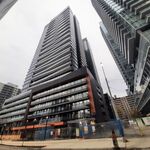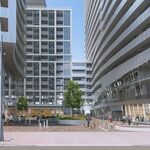evandyk
Senior Member
A bus lane too. Traffic nightmare!

An education and enforcement campaign titled “Safe Streets, Safe Roads” began on Monday and will be in effect for the next two weeks until Sunday, Nov. 17, primarily in the downtown core.
Traffic officers will be pulling over those who are potentially breaking the law, including those who are speeding, running red lights, hopping on and off sidewalks, and not wearing a helmet.
Rationalization of what? If there was not congestion related to bike lanes Ford would bounce to something else to complain about.The "congestion" argument is just rationalization.
Personally I don’t, but professionally this would go to the actuaries. Those are the folks who will decide how many additional dead or injured cyclists are worth an extra few minutes saved for drivers.How do you, personally, balance the reduction in collisions and injuries from installation of bike lanes against potentially increased travel times for vehicles?
Bike lanes are pure culture war. Not about congestion. You can tell about how gleeful Cory Teneycke was about goading the NDP/Liberals into opposing the policy.Rationalization of what? If there was not congestion related to bike lanes Ford would bounce to something else to complain about.
Bike lanes are pure culture war. Not about congestion. You can tell about how gleeful Cory Teneycke was about going the NDP/Liberals into opposing the policy.
But those are the cards we're dealt. The difference is how you deal with them - and I would argue that eliminating car lanes across the Province's capital city without any regard for possible push back from the city's overseers at Queen's Park was a predictable folly. Premier Doug Ford has been complaining about Toronto's bike lanes since 2018, and was a vocal opponent of them when he was on Toronto city council. We elect and expect our municipal politicians to be able to understand, anticipate and work within both the official regs and personalities coming out of Queen's Park.Bike lanes are pure culture war. Not about congestion.
Sure, but we're talking about roads.Cars must be kept out of some spaces for the safety and sanity of all residents.
You have misrepresented what I wrote. I did not advocate for the removal of all bike lanes. I think separated bike lanes which use bollards are problematic. I said they were a scourge for the disabled and that is the truth. I have seen many bike lanes that I support, but those separated ones with bollards are a major concern.There are already many disabled parking spots, accessible transit services etc., and YES we should have more but that's not the same as the absurd demand to remove all bike lanes due to disabled needs.
Thank you for supporting options to improve accessibility, but while my blanket statement may sound extreme, I would be happy to correct it to say, the vast majority of people with mobile and sight disabilities do not support bike lanes. You can call it blinkered, but it is an inconvenient reality.I would support options to improve accessibility but your blanket claims that "disabled do not support bike lanes" are blinkered.....
I confess to being ignorant of this intersectionality.......and ignore the diversity and intersectionality of the cycling and disability community.
Actually, I would say that it is you that needs more creativity. Advocating for separated bike lanes at the cost of accessibility of disabled citizens and then stating that there are already many disabled spots does not take into account the challenged the disabled face every day. I have simply encountered too many to mention here (sounds like a cop out, but I have enough to literally write a book). As for Premier Ford's pursuit of removing bike lanes, he makes no mention of accommodating disabilities. His focus is on improving traffic congestion.You need more creativity. Unfortunately this kind of black and white thinking bolsters Doug Ford's nonsense actions and will lead to more people getting hurt or killed.
That's in part because unlike in Ontario, the BC ministry of transportation has a province-wide guide on where and how to build bike infrastructure the BC Active Transportation Design Guide.I’m in Vancouver visiting and Toronto could learn a thing or two about how to build a proper bike lane from them.
Great. CTV can’t even spell Yonge Street properly.Also looks like he is expanding the scope of targets to remove per CTV Ottawa
View attachment 610163
How long do we expect to wait until demand builds?That's in part because unlike in Ontario, the BC ministry of transportation has a province-wide guide on where and how to build bike infrastructure the BC Active Transportation Design Guide.
FWIW, I asked ChatGPT to run a quick summary of the BC bike lane guides and congestion, see below.
Impact on Traffic Congestion
The BC Active Transportation Design Guide acknowledges that adding bike lanes may initially appear to reduce road capacity for cars, but it emphasizes that:
Now, a lot of this would rankle Premier Ford, but the below thinking should have been part of Toronto's ask from the province before the Ford era. Imagine if we had this level of guidance from the Ontario MTO before 2018.
- Long-Term Reduction in Traffic Congestion:
- In the long run, the addition of bike lanes can reduce overall traffic congestion by encouraging more people to cycle, which may decrease the number of cars on the road. This can lead to less demand for car-based infrastructure and a more balanced transportation network.
- By shifting some car trips to bicycles, congestion can be alleviated, especially in urban areas with high car traffic and limited road space.
- Induced Demand for Active Transportation:
- The guide suggests that by providing safe, attractive, and well-connected cycling infrastructure, cities can induce demand for cycling as a viable and appealing alternative to driving. This can help shift modal choices, particularly for short to medium-length trips that are well-suited for cycling.
- Evidence from cities around the world shows that when bike lanes are added, more people are likely to choose cycling, thereby reducing pressure on the road network and promoting a shift toward sustainable transport.
- Reducing the Need for Car Parking:
- In areas with bike lanes, there's often an associated reduction in demand for on-street parking. This can free up road space for other uses and help reduce the impacts of congestion, particularly in areas where parking is limited or scarce.
- Dynamic and Flexible Use of Road Space:
- The BCATDG emphasizes that bike lanes are part of a larger strategy for efficient use of road space. Cities can implement measures such as traffic calming, lane narrowing, and time-of-day management to accommodate bike lanes without unduly impacting traffic flow.
- In some cases, cities may implement dedicated cycling facilities during peak hours or convert underused car lanes into bike lanes, which can increase the overall capacity of the transportation network.




